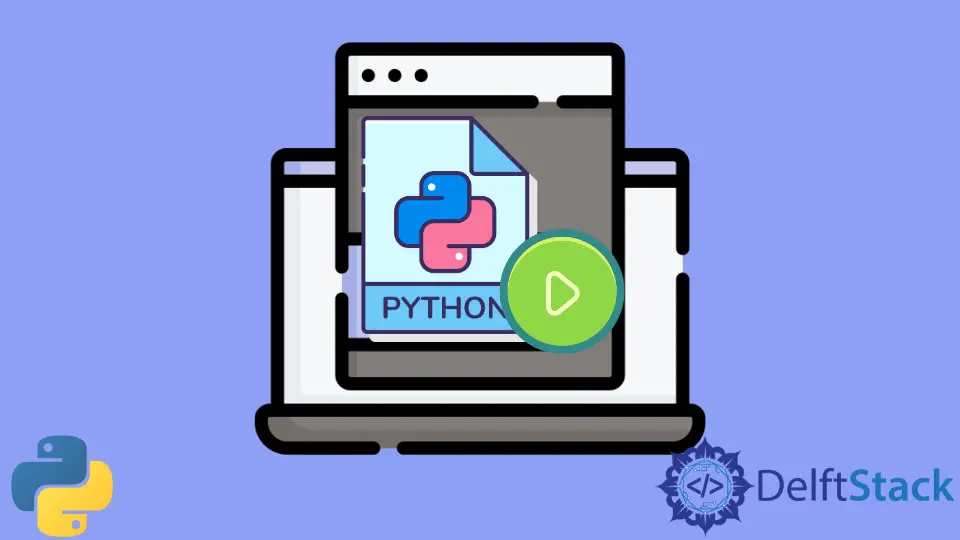How to Run Python File From Python Shell

Running a Python file from the Python shell can seem daunting if you’re new to programming or just starting with Python. However, it’s a straightforward process that can significantly enhance your workflow. Whether you’re testing snippets of code, debugging, or simply trying to execute a script, knowing how to run Python files effectively is essential.
In this tutorial, we will explore various methods to run Python files directly from the Python shell. By the end of this article, you’ll be equipped with the knowledge to execute your Python scripts seamlessly, making your coding experience smoother and more efficient.
Using the exec() Function
One of the simplest ways to run a Python file from the Python shell is by using the built-in exec() function. This function executes the Python code dynamically. To use it, you first need to read the contents of the file and then pass it to exec(). Here’s how you can do it:
file_path = 'your_script.py'
with open(file_path) as file:
exec(file.read())
In this example, replace your_script.py with the name of your Python file. The code opens the specified file, reads its contents, and executes it within the current Python shell context. This method is particularly useful for running scripts that you want to test quickly without leaving the shell environment.
Output:
Output from your_script.py
Using exec() allows you to run the entire script as if it were written in the shell itself. However, be cautious when using this function, especially with untrusted files, as it can execute any code, including harmful commands. Always ensure that the code you are executing is safe to run.
Using the import Statement
Another effective way to run a Python file from the shell is by using the import statement. This method is particularly handy when you want to execute a script that has defined functions or classes. By importing the file as a module, you can access its functions directly. Here’s how you can do it:
import your_script
your_script.main() # Assuming your_script.py has a main() function
In this example, replace your_script with the name of your Python file (without the .py extension). If your script has a specific function you want to call, like main(), you can do so after importing. This method is efficient for modular programming, allowing you to reuse code across different scripts.
Output:
Output from main() function in your_script.py
Using the import statement not only executes the code but also maintains the namespace, meaning that you can call different functions or classes from the imported file without executing the entire script again. This is particularly useful for larger projects where organization and code reuse are essential.
Using the os.system() Method
If you prefer a more straightforward approach, you can use the os.system() method to run a Python file from the shell. This method allows you to execute shell commands directly from Python. Here’s how to do it:
import os
os.system('python your_script.py')
In this case, replace your_script.py with the name of your Python file. This command will invoke the Python interpreter to run the specified script as if you were executing it from the command line.
Output:
Output from your_script.py
Using os.system() is a quick way to run scripts, especially if you want to execute them as standalone programs. However, be aware that this method does not return any output back to the Python shell, which means you might not see print statements or errors directly in your shell. Instead, you’ll only see the output in the console where the command was executed.
Conclusion
Running a Python file from the Python shell is a fundamental skill that can enhance your programming efficiency. Whether you choose to use exec(), the import statement, or os.system(), each method has its unique advantages. By mastering these techniques, you can streamline your coding process, making it easier to test and debug your scripts. Remember, the best method depends on your specific use case, so experiment with each to find what works best for you. Happy coding!
FAQ
-
How do I run a Python file in the terminal?
You can run a Python file in the terminal by navigating to the directory containing the file and using the commandpython your_script.py. -
Can I run a Python file from another Python file?
Yes, you can run a Python file from another Python file using theimportstatement or theexec()function. -
What is the difference between exec() and import?
exec()executes the code within the current context, whileimportallows you to access functions and classes defined in the file as a module. -
Can I run Python scripts that require user input from the shell?
Yes, you can run Python scripts that require user input from the shell, but you may need to handle input differently depending on the method you use. -
Is it safe to use exec() with untrusted files?
No, usingexec()with untrusted files can be dangerous as it can execute any code, including harmful commands. Always ensure the code is safe before running it.